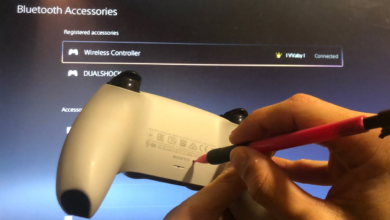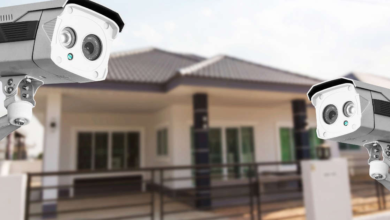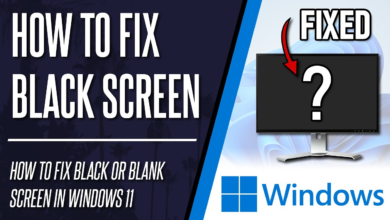How to wall mount a TV

The ability to mount current TVs on a wall, which provides a more cinematic viewing experience and saves space, is one of their main advantages. There are several alternatives available, whether you want to use the VESA mount that comes with your TV or upgrade to a universal mount to put your TV on the wall. But if this is your first time mounting a new TV on a wall, you should read this how-to guide we’ve put together before pulling out the drill and stud finder.
Although wall installation isn’t particularly difficult, it does require some accuracy, consideration, and persistence. After all, the last thing you want to see is your brand-new set buried behind a mountain of drywall-crumbled on your hardwood floor. Spend a few minutes reading and learning from our advice.
What height should my TV be on the wall?
The height at which you install your TV may be the most crucial choice you make because you’ll be spending a lot of time staring at it. The optimal position for the majority of individuals is at eye level, not looking up, however there is some controversy as to whether higher is better. Consider the fact that no one chooses to sit in the front rows of a movie theatre since doing so puts strain on the neck and eyes. But it’s also a good idea to consider what “sitting” implies in the specific room where your TV is located and how you plan to watch it.
For instance, you’ll want to mount the TV higher than you would if you were going to be curled up on the couch binge-watching your latest fixation if you plan to watch the game while at the bar, playing pool or darts.
Take a seat in your chosen chair, stool, or couch as you normally would, and have a friend or family member measure from the floor up to your eye level, keeping in mind anyone else who might be watching the TV as well (a couple of inches in height won’t make a significant difference).
The center of your TV, not the top or bottom edges, should be at this height. Conversely, Samsung claims that a suitable overall height is 42 inches from the floor, which is approximately eye level for a person who is 5 feet 6 inches tall. But regardless of the height you choose, place a piece of painter’s tape on the wall where the center will be. then take a seat and continue gazing for ten or one minute. You’re good if it feels comfy.
Your TV’s size will likewise barely matter because the center will be determined by dividing the TV’s height (measured from the top edge to the bottom) in half. Simply set the center to provide yourself ample space above the furniture if you’re installing on the wall above a piece of furniture, such as an A/V cabinet. As an illustration, if your ideal eye-level height is 40 inches and your cabinet is 20 inches tall, you would deduct the cabinet height from your eye-level height to get 20 inches. Then, split the height of your TV—say let’s 32 inches—in half (16 inches) to determine the distance between them.
What about viewing distance?
If you haven’t already done your research to decide what size TV to buy, some of that decision will depend on the size of your room and if you have enough space to sit comfortably away from the screen, which will also affect how you arrange your furniture.
You can use our helpful interactive tool to help you make an informed decision, but as a general rule, multiply the distance from your seat to the television in inches by 0.84 (for instance, 78 inches x 0.84 = 65.2-inch screen). You should get the widest range of screen sizes from this.
There are various viewing distance calculators that show you the ideal seating distance you require dependent on the TV size, but, if you already have your heart set on a certain screen size.
Picking a TV wall mount
You might be wondering where to get a mount and whether the kind you choose matters if your TV didn’t come with a wall mount or if you no longer have one. Depending on how you want your mount to function, you have a number of alternatives.
If you don’t have much room to work with or want the TV to perch as near to the wall as it can, you can get a low-profile model with a simple tilt design. You can want a full motion wall bracket if the TV will be moved around to different angles (more typical in a classroom or conference room). The good news is that you should be able to find a compatible model because the majority of third-party mounts are reasonably priced—typically between $20 and $50—and made to fit a wide range of TV sizes and weights.
What color should I paint the wall behind the TV?
Due to their sheer size, TVs—especially those with 65-inch or larger displays and today’s more popular models—often serve as the main point of any room in which they are placed. Like you would when painting any other wall, consider the colors that would fit best with the space when choosing a wall color to go behind your TV.
Painting your walls in lighter, natural hues, such as beige, ivory, or cream, will not only make your room appear larger, but will also draw attention to the TV on the wall.
However, darker hues like charcoal, midnight blue, and other tones will make the TV blend in more while it is off while simultaneously making it appear brighter and more vivid when it is on, which many people perceive to be a more theatrical, immersive experience. A nice compromise if you don’t want to commit to a completely dark space is to just add an accent wall behind the TV.
How to use a stud finder the right way
Little electric stud finders might be challenging to use. They could be one of the most useful tools in the kit or the cause of a dozen more holes in the wall. Here are four suggestions to make sure they don’t deceive you.
Step 1: Go slowly: Stud finders must be correctly calibrated in order to be useful. Place yours on the wall first, then turn it on by typically pushing and holding a button. Allow the stud finder to briefly read the density of the substance before slowly moving it from side to side. Repeat the process a few times, starting from a different location each time.
Use a piece of painter’s tape to mark each stud you find. Finding three that are the same distance apart and measuring them with a tape measure is something we advise. You can prevent false positives by doing this.
Step 2: Defeating popcorn texture: Have you ever attempted to use a stud finder on a ceiling that has popcorn texture? You not only mess up the texture, but the stud finder is also subpar. By covering the area you wish to scan with a piece of cardboard, you may easily solve this issue. The cardboard provides a flat surface for the stud finder to glide on, making it simple to locate the joists.
Step 3: Be sure there are no fire blocks running horizontally between the stud bays by using your stud finder vertically up and down the wall before you drill any holes. Even for seasoned installers, fire blocks can make it exceedingly difficult to fish cables down the wall.
Step 4: Always check twice because it’s relatively simple to trick stud finders. They frequently interpret a drywall seam as a stud. Use something to probe into the wall after you’ve identified your studs and the locations where you want to drill holes to make sure you marked a stud.
A shortened coat hanger or piano wire can do just fine in place of the small precision screwdriver that we typically use. Since you will have a greater sense of what is inside the wall if you do this by hand as opposed to using a power tool, we advise against doing so. Also, if a small nail is tapped into the wall and it passes through the drywall without “dropping in,” you have discovered a stud.
Before drilling, you should make sure you are still on the stud by poking a small hole to the left and right of the intended drilling location. By doing this, you may be certain that you are centered on a stud and not merely clipping its side (and possibly hitting electrical wiring).
Help! The studs are in the wrong spot — or there aren’t any
You’ve located the ideal place in your house to mount a TV. You’ve read through every one of our stud search tips and are now prepared to use one. Yet, after 20 minutes of searching, you come up empty-handed, with uneven findings, or with studs that don’t line up with the holes in your wall mount. There are various options that can solve your little issue with little, if any, further work.
Step 1: Remove the covers. If a stud finder can’t be used to find the studs, look for an outlet on the wall (or any other fixture, like a cold air return). Except for those that were added after the wall was up, all outlets are fastened to studs (not common).
You may determine which side the stud is on by removing the wall plate and inserting a thin tool into the space between the electrical box and the drywall. You should find another stud if you measure above 16 inches from that point. until you reach the spot where you wish to place the TV, keep moving forward 16 inches at a time. Then, poke a small hole in the wall using a tool to determine if a stud is indeed present.
Step 2: Create your own holes: What if the studs you discover don’t match up with the ones on the mounting bracket for your wall? Making holes in the wall bracket is simple. Using a step drill bit and a strong drill is the most effective way to accomplish this. A steel wall mount can be quickly cut through with a decent step drill bit.
Step 3: Employ a toggle: You’ll need to use a hollow wall anchor if there aren’t any studs where you wish to install the TV. They have the potential to be very powerful, but generally speaking, they shouldn’t be used with articulating or full-motion mounts. This is because pulling the TV in and out might practically rip the wall bracket off the anchors due to the stress placed on the bracket-arm. One of the best available is the quarter-inch Snaptoggle, and a couple of them can easily support modern 55-inch TVs on a single sheet of plasterboard.
If you know the boundaries of the wall and the toggles, mounting a TV on drywall or plaster without fastening it to a stud can be a very safe and reliable method. They are frequently used by qualified home theatre installations. We are aware of some installers who overestimated the wall’s stability and left a TV on the floor. In the end, if you don’t feel confident doing the installation, think about hiring a pro.
Please, hide all of the cords in the wall
A tangle of visible wires quickly detracts from the appearance of a great television set on the wall. Fortunately, it’s relatively cheap and simple to conceal cables inside a wall. Using an IWPE (in-wall power extension) or a power relocation kit is the simplest way to accomplish this. These kits include everything you need to conceal all of your signal wires and run power to your TV (some even come with a cutting tool). Why not install an extension cord in the wall rather than an outlet, you might be asking. The National Electric Code (NEC) prohibits dropping a power wire or extension cord within a wall. Also, it’s prohibited to use low-voltage cables like HDMI inside One reason pricey HDMI cables are worthwhile investments is that they can be used in the wall unless they are CL3-rated for in-wall use.
The additional HDMI connections on your TV might not be necessary right now, but you might wish to expand your home theatre system in the future. Run more HDMI cables through the wall and install them now so you have them available when you need them.
An IWPE is a wall-rated extension cord, which is exactly what it sounds like. When all is said and done, you’ll have an outlet behind your TV and what’s known as an inlet by the floor (at the same height as your other outlets). You link an extension cord from an existing outlet to the inlet to supply electricity to the kit. Confused? This kit’s illustrations provide a detailed explanation.
Be sure your low-voltage wires are approved for usage in walls before you start the installation. The next thing to be aware of with regard to IWPE kits is that they include a predetermined length of electrical wire, usually between 6 and 8 feet. Additionally keep in mind that they shouldn’t be used above a fireplace and that they should only be utilized in single stud bays. Although these restrictions may be circumvented or disregarded, we don’t advocate doing so.
If there isn’t an electrical outlet above the mantle and you want to hang a TV over a fireplace—which is something we often advise against—we suggest contacting an electrician. They might be able to tap off an existing outlet to supply power to your fireplace if one is close by (at floor level). Also, we suggest that you ask the electrician to run additional A/V wires for you. After a successful wall-mounting task, running HDMI, coaxial, and speaker wire is never enjoyable, especially if it is done above a fireplace.
Install a paintable wire channel if you are unable to conceal cables inside the wall. The majority of them merely adhere to the wall, allowing you to conceal all of your cords within for a neat appearance. But be aware that it’s likely the paint will come off when you remove the wire channel.
Choosing the right cable length
No matter if your TV will be mounted on a wall or a stand, get longer cords than you anticipate being required. This is the piece of advice that is most frequently disregarded. Excess wire can be concealed in a wall, wrapped, or otherwise. If the cables are too short, you run the risk of them breaking, falling out, failing to reach, or, even worse, harming your equipment.
8-foot cables will work well for a conventional flat-panel installation with a tilting wall TV mount and equipment placed directly below the TV. Twelve-foot wires make it possible to connect the equipment before the TV is mounted on the wall or to remove it once it has been connected. You will need 12-foot cabling if you’re mounting a TV higher than usual (the bottom of the ordinary TV is between 36 and 46 inches from the floor). If you think that’s excessive, think about this: If the cable is properly routed to allow the TV on the mount to move safely, you will consume 3 to 4 feet of wire before ever reaching the wall on a normal full-motion mount with a 20-inch arm.
Leveling your TV correctly
Everything has been assembled, tightened, assembled, and otherwise packaged. You take a step back to see your newly installed TV on the wall, but there’s a problem. Not level is the TV.
How do you behave? Do you need to lower it? new holes in the wall to be drilled? Cry? cry ferociously? Maybe none of the aforementioned. Almost always, a crooked TV can be levelled. Just keep in mind that if the ceiling, floor, or mantle aren’t level, a TV may not always appear level (so be sure your viewing angle isn’t tricking you). Before you lose your mind trying to level the flat-screen TV, check these additional locations.
Step 1: Put your back into it by approaching the TV as it is hanging on the wall, grabbing the sides, and attempting to yank the TV into a level position. Actually, no. The tightness of the bolts holding the wall mount arms to the TV’s back will determine how successful you are in this. You should have some wiggle room to help level the TV if they aren’t overly fastened. As a side note, if you follow these instructions and the TV falls off the wall, you did something incorrectly.
Step 2: Lengthen, push, tighten: After removing the TV from the wall, loosen the bolts holding the back of the TV’s arms in place. Then, push the arms upward and downward as you tighten the arms back into place. Reposition the TV so you can check its level. If not, repeat the process with the wall plate.
Step 3: If you’ve used up all of the allocated wiggle room and it still isn’t level, improvise by adding more wiggle room. The holes in the arms or wall plate can be rounded off using the step drill bit we previously discussed. This might offer you the tiniest bit more room you need; just be careful not to go overboard and block the holes. You can always purchase larger washers if you unintentionally make the holes so large that bolts can pass through.
All of the advice on this page is based on years of personal experience mounting TVs on plaster, brick, steel studs, ceilings, plaster, etc. Almost none of them will be found in an instruction manual, although some of them are common sense. You can mount your own TV if you have the necessary tools, a few hours, and persistence. However just make sure to allot your time properly. Professional installation of a straightforward wall mount (tilting mount, drywall, exposed wire) might take about 20 minutes from unpacking to completion. Because, let’s face it: Breaking a TV is never enjoyable, a rookie should prepare to study the instructions, approach slowly, and free up an afternoon.











